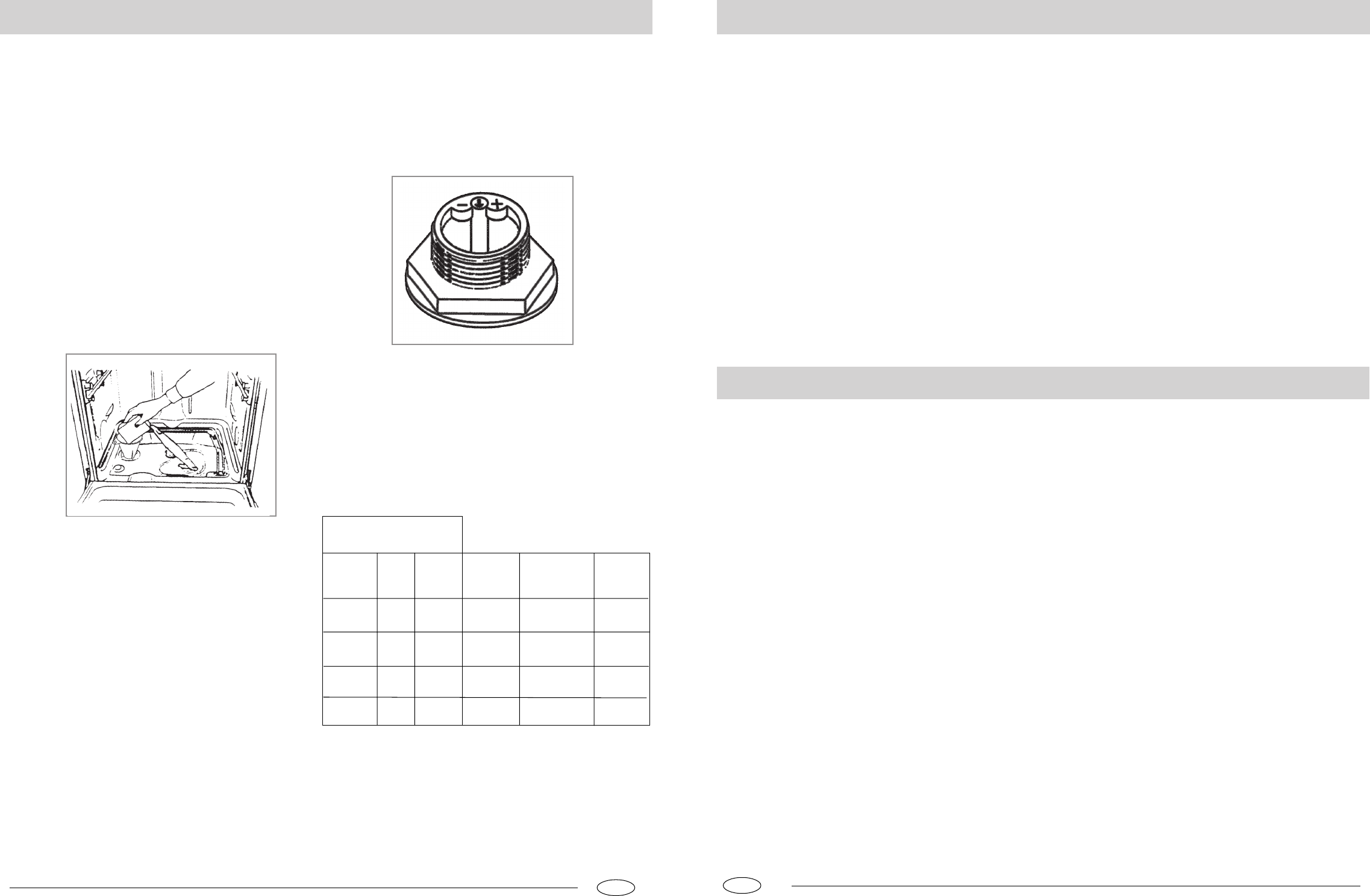
Salt
Salt
The hardness of the water varies from place to place. If hard
water is used in the dishwasher, deposits will form on the dishes
utensils.
The appliance is equipped with a special softener that uses a salt
specifically designed to eliminate lime and minerals from the water.
Loading the Salt into the Softener
Always use salt intended for use with dishwashers.
The salt container is located beneath the lower rack and should
be filled as follows:
- Remove the lower rack and then unscrew and remove the cap
from the salt container;
- If you are filling the container for the first time, fill it with water;
- Place the end of the funnel (supplied) into the hole and intro-
duce about 2 kg of salt. It is normal for a small amount of water
to come out of the container.
- Carefully screw the cap back on.
The salt container should be filled after about every 30 wash cycles.
To prevent the formation of rust, load the salt just before begin-
ning a wash cycle.
Adjusting Salt Consumption
The dishwasher is equipped with a system to adjust the level of
salt consumption in function of the hardness of the water being
used in order to optimize and customize the level of salt con-
sumption while keeping it to a minimum.
To adjust salt consumption level, follow these instructions:
- Unscrew the cap on the salt container;
- On the container there is an arrow (see figure to the side). If
necessary, turn the arrow in the anti-clockwise direction from
the "-" setting to the "+" setting based on the hardness of the
water being used.
- It is highly recommended that the table be consulted when
making adjustments .
Autonomy
(cycles/2kg)
.3.
GB
Water Hardness
Clarke
degrees
dH
mmol/l
Selector
position
Salt
consumption
(Grams/cycle)
014
MNM
MNIT
NIUQIQ
NUQQ
NQPS
PSTN
QRUV
QIRUIV
[UV
[TN
[UIV
L
=?J?
jba
L
M
OM
QM
SM
?H?
SM
QM
OR
- It is important to try and run the dishwasher when it is fully
loaded to save on energy. In order to prevent odors from form-
ing and food from caking onto the dishes, you can run the hold
cycle.
- Choose the right wash cycle: the choice of cycle depends on
the type of dishware, cookware and utensils being washed and
how dirty they are.
Energy Saving Tips
- Use the right amount of detergent: if you use too much detergent,
the result will not be cleaner dishes, but, rather, a greater nega-
tive impact on the environment.
- There is no utility in rinsing dishes, cookware and untensils
before placing them in the dishwasher.
How to Keep Your Dishwasher in Shape
After Every Wash
After every wash, turn off the water supply to the appliance and
leave the door slightly ajar so that moisture and odors are not
trapped inside.
Remove the Plug
Before cleaning or performing maintenance, always remove the
plug from the socket. Do not run risks.
No Solvents or Abrasive Cleaning Products
To clean the exterior and rubber parts of the dishwasher, do not
use solvents or abrasive cleaning products. Rather, use only a
cloth and warm soap water.
To remove spots or stains from the surface of the interior, use a
cloth dampened with water and a little white vinegar, or a clean-
ing products made specifically for dishwasher.
When You Go on Holiday
When you go on holiday, it is recommended that you run a wash
cycle with the dishwasher empty and then remove the plug from
the socket, turn off the water supply and leave the door of the
appliance slightly ajar. This will help the seals last longer and pre-
vent odors from forming within the appliance.
Moving the Appliance
If the appliance must be moved, try to keep it in the vertical position.
If absolutely necessary, it can be positioned on its back.
Seals
One of the factors that cause odors to form in the dishwasher is
food that remains trapped in the seals. Periodic cleaning with a
sponge will prevent this from occurring.
.8.
GB








